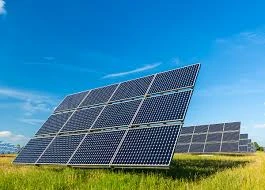grid tie inverter
Understanding Grid-Tie Inverters The Key to Efficient Solar Energy Use
As the world continues to shift towards renewable energy sources, solar power has emerged as one of the most promising options for sustainable energy generation. A crucial component of solar power systems is the grid-tie inverter, which plays a significant role in converting the direct current (DC) generated by solar panels into alternating current (AC) that can be fed into the electrical grid. In this article, we will explore the functioning, advantages, and challenges of grid-tie inverters, highlighting their importance in modern energy systems.
What is a Grid-Tie Inverter?
A grid-tie inverter, also known as a grid-connected inverter, is an essential device used in solar power systems that are connected to the utility grid. Unlike off-grid inverters, which allow systems to operate independently from the grid, grid-tie inverters are designed to sync with the grid’s voltage and frequency. This synchronization is essential for safety and efficiency, ensuring that any energy produced can be smoothly fed into the grid.
The primary function of a grid-tie inverter is to convert the DC electricity generated by solar panels into AC electricity. This AC electricity can then be used to power homes and businesses or be sent back to the grid. The inverter continuously monitors the grid’s status, adjusting its output accordingly to ensure compatibility and safety.
Advantages of Grid-Tie Inverters
1. Energy Efficiency Grid-tie inverters are designed with high efficiency in mind, often achieving conversion efficiencies of 95% or higher. This means that a minimal amount of energy is lost during the conversion process, allowing for maximum utilization of solar energy.
2. Net Metering One of the most significant benefits of grid-tie systems is the ability to participate in net metering. When solar panels produce more electricity than a household consumes, the excess energy can be sent back to the grid. Homeowners receive credits on their utility bills, effectively reducing their electricity costs.
grid tie inverter

3. Lower Initial Investment Grid-tie systems generally have a lower upfront cost compared to off-grid systems. Since they do not require batteries for energy storage, homeowners can avoid the additional expenses associated with battery purchases and maintenance.
4. Reduced Carbon Footprint By using solar energy and feeding excess power back into the grid, households can significantly reduce their reliance on fossil fuels, contributing to a decrease in greenhouse gas emissions and promoting a cleaner environment.
Challenges and Considerations
Despite their many advantages, grid-tie inverters also come with certain challenges. One of the primary concerns is their dependence on the electrical grid. In the event of a power outage, grid-tie inverters automatically shut down to ensure safety; this means that homeowners cannot use their solar power unless the grid is operational.
Additionally, the installation of grid-tie systems may be subject to regulations and requirements set by local utility companies. It’s important for homeowners to research these regulations to ensure compliance and understand any potential costs associated with connecting to the grid.
Lastly, selecting the right inverter is crucial. Factors such as inverter capacity, warranty, and brand reputation can significantly influence the performance and durability of the solar power system. Homeowners should consult with experienced professionals to make informed decisions that align with their energy needs.
Conclusion
Grid-tie inverters serve as the backbone of modern solar power systems, enabling homeowners to harness renewable energy efficiently. With their ability to convert DC electricity to AC and feed it back into the grid, these inverters not only promote energy independence but also contribute to environmental sustainability. As technology advances and the demand for clean energy solutions increases, grid-tie inverters will continue to play a vital role in the transition to a more sustainable energy future.
-
Unlocking Energy Freedom with the Off Grid Solar InverterNewsJun.06,2025
-
Unlock More Solar Power with a High-Efficiency Bifacial Solar PanelNewsJun.06,2025
-
Power Your Future with High-Efficiency Monocrystalline Solar PanelsNewsJun.06,2025
-
Next-Gen Solar Power Starts with Micro Solar InvertersNewsJun.06,2025
-
Harnessing Peak Efficiency with the On Grid Solar InverterNewsJun.06,2025
-
Discover Unmatched Efficiency with the Latest String Solar InverterNewsJun.06,2025







